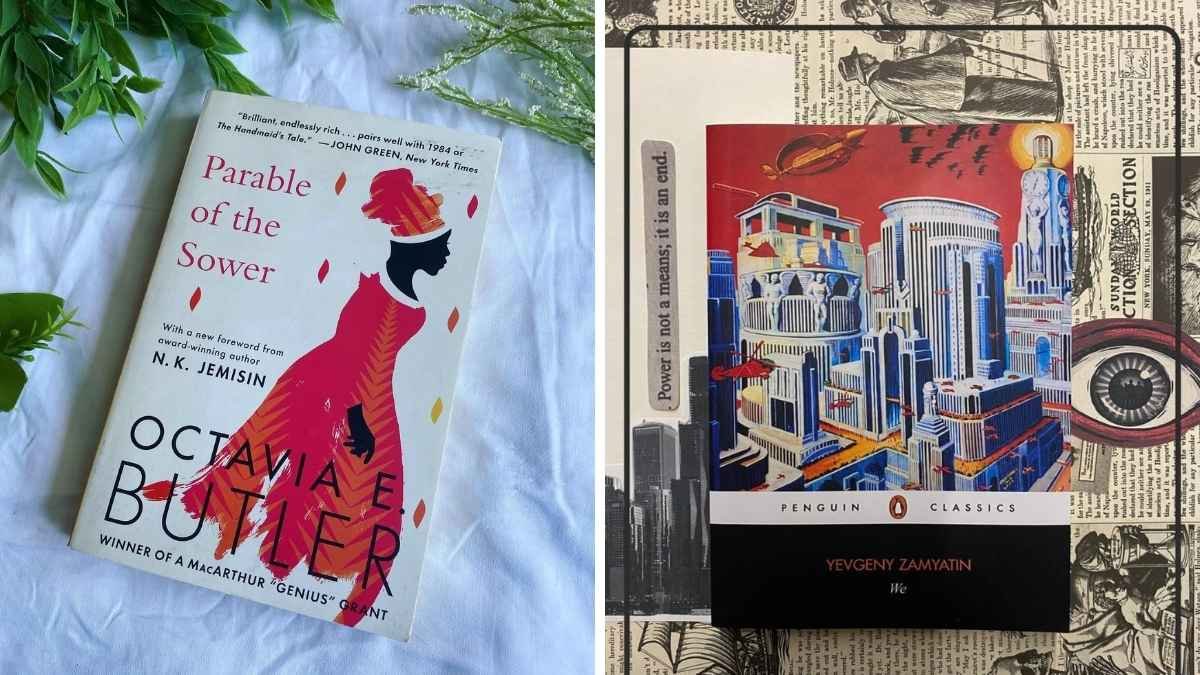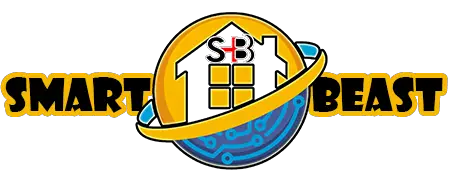
Dystopian fiction is a genre that thrives on discomfort. It peers into the future, amplifies our present fears, and dares us to ask: How close are we to this nightmare? But while classics like 1984 and Brave New World dominate the conversation.
There’s a hidden army of lesser-known novels that scream warnings about today’s strangest problems—technology addiction, climate collapse, surveillance creep, and more.
These books didn’t just predict the future; they dissected its grotesque anatomy. Yet they’ve faded into obscurity, their insights buried under the weight of time. Let’s exhume them.
1. The Machine Stops by E.M. Forster (1909)

Long before Zoom calls and digital isolation became our reality, E.M. Forster painted a chilling portrait of humanity entombed in underground cells, living entirely through mechanical mediation. In this eerily prescient novella, people communicate exclusively through glowing screens, have their needs met by an all-powerful Machine, and consider physical interaction not just unnecessary but repulsive. The protagonist, Vashti, embodies our modern condition perfectly—she lectures about a world she’s never seen, experiences life through secondhand accounts, and treats the very idea of direct experience with suspicion.
The most unsettling aspect isn’t just how accurately Forster predicted our screen-mediated existence, but how he foresaw our willing surrender to digital comfort. The Machine doesn’t enslave humanity through force; humanity demands its imprisonment, choosing the safety of isolation over the messiness of real connection. Sound familiar? We’re living in Forster’s world now, where “unplugging” has become a radical act and where we’ve traded the richness of direct experience for the convenience of digital proxies.
2. We by Yevgeny Zamyatin (1924)

Before Orwell wrote 1984, before Huxley penned Brave New World, there was We, the dystopian novel that started it all. Zamyatin’s masterpiece presents the One State, where citizens live in glass apartments, have numbers instead of names, and schedule every minute of their day with mathematical precision. The protagonist, D-503, believes he’s free because he can choose which government-approved activities fill his time slots, a chilling echo of our modern illusion of choice within corporate-controlled systems.
What makes Zamyatin’s vision uniquely disturbing is how he predicted our current obsession with transparency and quantification. In the One State, privacy is the ultimate crime because it implies you’re hiding something from the collective. Today, we voluntarily broadcast our locations, our purchases, our thoughts, and our relationships to corporations and governments, believing this makes us “connected” rather than controlled. The novel’s mathematical worship of efficiency over humanity feels particularly relevant in our age of algorithmic governance and data-driven decision making.
3. The Space Merchants by Frederik Pohl and C.M. Kornbluth (1952)

This biting satire of consumer culture reads like a documentary about our advertising-saturated present. In Pohl and Kornbluth’s future, advertising executives are the real power brokers, governments are puppets of corporate interests, and even basic human needs like water and air come with brand names attached. The novel follows Mitch Courtenay, a star-class copywriter tasked with making the colonization of Venus appealing to an overpopulated, underemployed Earth—a premise that feels less like fiction and more like a Tuesday at a modern marketing agency.
The book’s genius lies in its prediction of native advertising and influencer culture decades before either existed. In this world, every conversation is a sales pitch, every relationship has a commercial angle, and resistance to consumer messaging is treated as a mental illness requiring “corrective advertising.” The authors saw how marketing would evolve from obvious pitches to subtle manipulation, how it would infiltrate every aspect of human experience until distinguishing between authentic desire and manufactured want became impossible.
4. The Sheep Look Up by John Brunner (1972)

Brunner’s environmental dystopia feels less like fiction and more like a weather report from 2024. In this novel, pollution has made the air barely breathable, the water undrinkable, and the food supply a slow-acting poison. The wealthy buy clean air and water while the poor choke on the consequences of industrial “progress.” What makes this novel particularly haunting is how Brunner predicted our current paralysis in the face of environmental crisis—everyone knows the system is killing them, but the machinery of commerce and politics makes change impossible.
The novel’s most prescient element is its portrayal of how environmental collapse would be normalized and monetized rather than prevented. Companies sell breathing masks and water filters instead of cleaning up their messes, turning survival itself into a luxury product. Brunner understood that environmental destruction wouldn’t come with dramatic disasters but with the slow accumulation of acceptable risks, each one small enough to ignore until the cumulative effect becomes catastrophic.
5. Stand on Zanzibar by John Brunner (1968)

Brunner makes a second appearance on this list because Stand on Zanzibar predicted our current information overload and media saturation with uncanny accuracy. The novel’s structure mirrors our fractured attention spans, jumping between news snippets, advertisements, and narrative fragments. Set in 2010 (from a 1968 perspective), the book presents a world where overpopulation has made privacy impossible, violence random, and media omnipresent—a world where individuals struggle to maintain identity amid the constant barrage of information.
What sets this novel apart is its understanding of how media saturation would fundamentally alter human consciousness. Characters in the novel suffer from “muckers”—people who suddenly snap under the pressure of constant stimulation and go on killing sprees. Today, we might call this going viral or having a mental breakdown online. Brunner saw how the endless stream of information would create a kind of societal ADHD, where depth of understanding gives way to breadth of exposure, and where the ability to filter signal from noise becomes the most valuable survival skill.
6. The Windup Girl by Paolo Bacigalupi (2009)

Paolo Bacigalupi’s The Windup Girl presents a bio-engineered nightmare where corporations control the food supply, genetic modification has gone wrong, and climate change has destabilized entire nations. Set in a future Bangkok, the novel explores a world where calories have become currency, and “new people” with enhanced biological features are treated as second-class citizens. The protagonist, Anderson Lake, is a calorie man working for AgriGen, a company that monopolizes food production through bio-engineered crops. His mission to save the company from financial ruin intertwines with the plight of Holo, a windup girl with emotions and consciousness but no rights.
What makes this novel uniquely relevant is its exploration of corporate control over basic human needs and the ethical dilemmas of genetic modification. Bacigalupi foresaw how biotechnology could be weaponized against populations, creating dependencies on engineered products while simultaneously dehumanizing those who are genetically altered. The novel’s depiction of climate refugees and collapsing ecosystems feels particularly prescient in our current age of rising temperatures and extreme weather events.
7. Oryx and Crake by Margaret Atwood (2003)

Margaret Atwood’s Oryx and Crake takes us into a world where biotechnology has run amok. The story follows Snowman, the last surviving human, as he navigates a post-apocalyptic landscape inhabited by Crakers—genetically engineered humans created by his best friend, Crake. The novel explores themes of corporate control, environmental collapse, and the dangers of unchecked scientific advancement. What sets this novel apart is its chilling portrayal of how corporate interests could drive humanity to extinction in the pursuit of profit.
Atwood’s genius lies in her prediction of how biotechnology would become intertwined with consumer culture. In the novel, genetically modified animals are created for entertainment and food, while pharmaceutical companies develop addictions to ensure consistent revenue streams. The Crakers themselves represent the ultimate product—humans engineered to be docile, disease-resistant, and environmentally adapted, but stripped of the very qualities that make us human. This feels particularly relevant today as we grapple with gene editing technologies like CRISPR and the commodification of biological processes.
8. Parable of the Sower by Octavia E. Butler (1993)

Octavia Butler’s Parable of the Sower presents a dystopian America where society has collapsed due to climate change, economic inequality, and corporate greed. The novel follows Lauren Olamina, a young woman with hyperempathy, who journeys north with a group of survivors. Along the way, she develops Earthseed, a new belief system centered on change as the only constant. What makes this novel particularly powerful is its unflinching look at how environmental collapse and social inequality could lead to the breakdown of civil society.
Butler’s prescience extends to her understanding of how climate change would disproportionately affect vulnerable populations. In the novel, the wealthy live in walled communities while the poor scavenge in danger zones. This reflects our current reality, where climate refugees and economically disadvantaged communities bear the brunt of environmental disasters. The novel’s exploration of how trauma can both destroy and build community feels particularly relevant in our increasingly polarized world.
9. The Mote in God’s Eye by Larry Niven and Jerry Pournelle (1974)

This collaborative effort between Larry Niven and Jerry Pournelle presents a first contact scenario with aliens who have a completely different understanding of property and resources. The novel explores themes of cultural misunderstanding, resource scarcity, and the potential for conflict when different civilizations clash over limited resources. What makes this novel stand out is its exploration of how human institutions might respond to an encounter with a truly alien intelligence.
The novel’s most relevant aspect is its examination of how resource scarcity can drive both cooperation and conflict. In the story, the humans and aliens must navigate their differences while dealing with limited supplies in space. This mirrors our current struggles with finite resources like fresh water, arable land, and fossil fuels. The novel also raises important questions about how we define intelligence and civilization, which feels particularly relevant as we continue to search for extraterrestrial life and develop artificial intelligence.
10. The Children of Men by P.D. James (1992)

P.D. James’s The Children of Men explores a world where human fertility has ceased, leading to social collapse and the rise of authoritarianism. The novel follows Theo, a reluctant hero who becomes involved in a dangerous mission to help a pregnant woman reach safety. What makes this novel particularly compelling is its exploration of how hope can sustain humanity even in the face of seemingly inevitable extinction.
James’s prescience lies in her understanding of how hope can be both a powerful motivator and a dangerous illusion. In the novel, the government manipulates hope to maintain control, promising solutions to the fertility crisis while systematically oppressing dissent. This reflects our current situation, where political leaders often promise easy solutions to complex problems while avoiding meaningful action. The novel’s exploration of how societies can descend into authoritarianism when faced with existential threats feels particularly relevant in our politically volatile times.
11. Neuromancer by William Gibson (1984)

William Gibson’s Neuromancer introduced the world to cyberspace long before the Internet became a household necessity. The novel follows Case, a washed-up computer hacker hired for one last job in the sprawling digital universe. What makes this novel particularly relevant today is how accurately it predicted the commodification of digital identity and the emergence of artificial intelligence in our daily lives. Gibson envisioned a world where human consciousness could be uploaded, identities bought and sold, and corporations wielded more power than governments.
Gibson’s true genius lies in his understanding of how technology would blur the lines between reality and simulation. The novel’s depiction of hackers navigating virtual worlds feels eerily similar to our current metaverse ambitions. The idea that corporations would create digital afterlives for the wealthy and turn personal data into a tradable commodity has become alarmingly prescient in our age of NFTs and data privacy concerns. Neuromancer didn’t just predict the internet—it foresaw how it would fundamentally alter human perception and social structures.
12. The Lathe of Heaven by Ursula K. Le Guin (1971)

Ursula K. Le Guin’s The Lathe of Heaven explores a world where dreams can reshape reality. George Orr discovers he can alter the world through his dreams, a power that attracts the attention of Dr. William Haber, who seeks to use Orr’s abilities to “fix” global problems. What begins as an attempt to solve overpopulation and climate change soon spirals into unintended consequences, demonstrating how even well-intentioned interventions can lead to dystopian outcomes.
Le Guin’s novel brilliantly anticipates our current crisis of unintended consequences in technology and governance. The story serves as a warning about the hubris of attempting to control complex systems without understanding their full implications. In our world of AI interventions and climate engineering proposals, the novel’s message resonates strongly: solutions imposed from above often create new problems that are more difficult to solve than the original issues.
13. The Road by Cormac McCarthy (2006)

Cormac McCarthy’s The Road presents a post-apocalyptic journey of a father and son through a landscape stripped of nearly all life. The novel doesn’t specify what caused the collapse, focusing instead on the human spirit’s resilience and the moral choices that emerge in extreme scarcity. What makes this novel particularly haunting is how it strips away the distractions of modern life to examine what truly matters in human relationships.
McCarthy’s brilliance lies in his ability to make the reader confront the fragility of civilization. The novel’s unflinching depiction of how quickly social structures can collapse and how moral frameworks shift when basic needs aren’t met feels increasingly relevant in our era of climate emergencies and political instability. The father and son’s journey represents not just survival but the preservation of humanity’s better angels in a world that increasingly tests our capacity for compassion.
14. The Dispossessed by Ursula K. Le Guin (1974)

Ursula K. Le Guin’s The Dispossessed tells the story of Shevek, a physicist from an anarchistic moon colony who travels to a resource-rich but socially stratified planet. The novel explores themes of resource management, political ideology, and how different social systems respond to scarcity. What makes this novel stand out is its balanced examination of both capitalist and anarchist societies, showing the strengths and flaws of each.
Le Guin’s novel offers a rare examination of how resource distribution shapes human behavior and social structures. The story of how societies might respond to environmental collapse through either increased authoritarianism or cooperative adaptation. In our current struggle with climate change and wealth inequality, the novel provides a thought-provoking look at alternative social structures that might better address our collective challenges. It serves as a reminder that our current systems aren’t the only possible ways to organize society.





